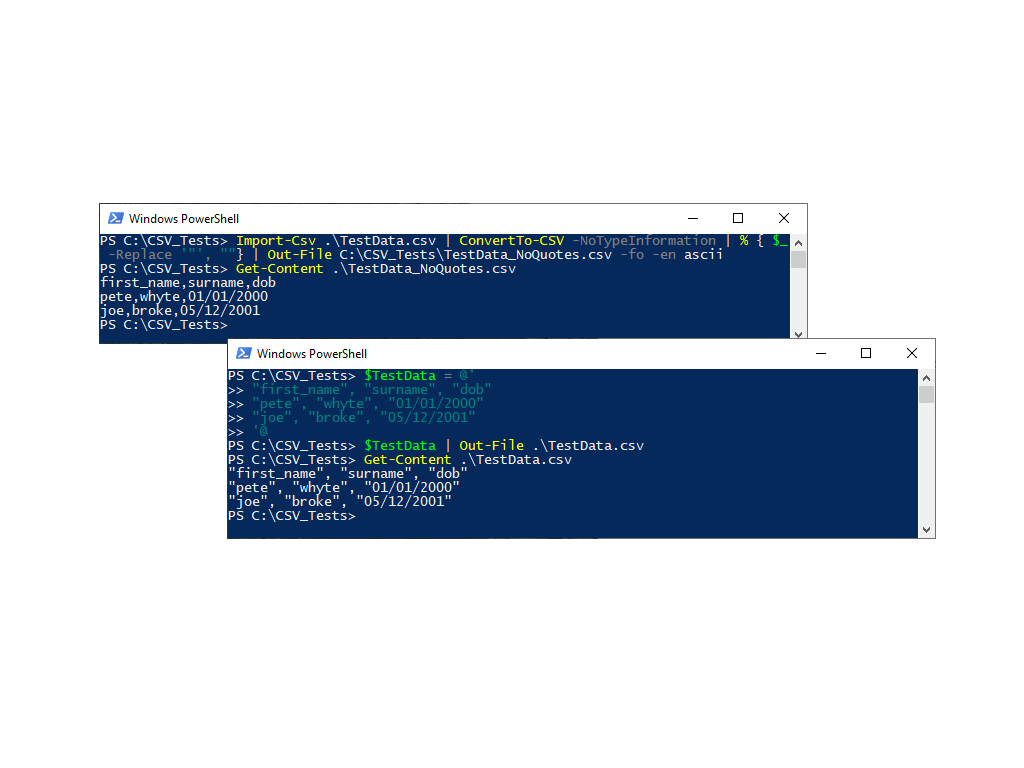
# Next, note that brackets are used in case of a keyword

# First, this will remove any unnecessary spaces so that our columns look like ColumnOne,ColumnTwo # Note that we want the comma to be replaced with the syntax for T-SQL column creation
#Import csv file into powershell code#
For now, we will code this directly and later turn it into a function: We must tell PowerShell the name of the file and where the file is located for it to do this. PowerShell will automatically create our staging table using the above assumptions by reading from the file we want. PowerShell Code to Automatically Import Data Remember, you're paying for it, so make sure that it's what you want. In a world of competitive data providers, most small startup shops have a large supply of who they want to work with if they don't like a specific company's data. These are important to note because for every exception to the rule, an exception must be noted in code.

If this is not the case, you will need to spend time re-naming the files you receive. For the sake of this example, we'll assume that the data provider sends only flat file data and that these files are named in an appropriate manner for their data (meaning, if it's stock data, the data file is "stock.txt"). Due to our limited budget and time, how can we automate this? Solutionīefore we begin, if your data provider possesses an API, it may be simpler to grab live data. A data provider sends us flat file data and we extract, analyze and report on these data.

We're looking to minimize ETL costs by importing as much data as possible using a automated system. By: Tim Smith | Updated: | Comments (39) | Related: More > Import and Export


 0 kommentar(er)
0 kommentar(er)
